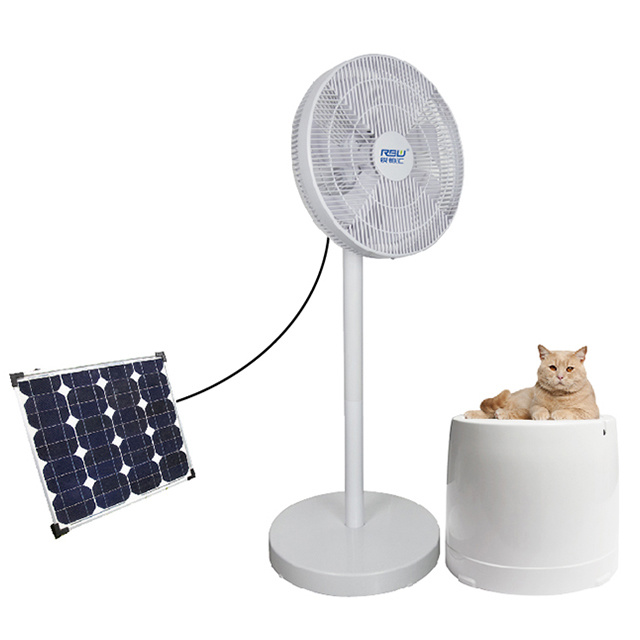News
Comparing Traditional Fans and Rechargeable Fans with Solar Panels: Which is Better?
Time:
2025-07-16
Comparing Traditional Fans and Rechargeable Fans with Solar Panels: Which is Better? Introduction to Cooling Solutions In today's fast-paced world, finding effective and energy-efficient cooling solutions is crucial. Whether for personal comfort or environmental concerns, the choice between **traditional fans** and **rechargeable fans with solar panels** presents a significant decision. This art
Comparing Traditional Fans and Rechargeable Fans with Solar Panels: Which is Better?
Introduction to Cooling Solutions
In today's fast-paced world, finding effective and energy-efficient cooling solutions is crucial. Whether for personal comfort or environmental concerns, the choice between **traditional fans** and **rechargeable fans with solar panels** presents a significant decision. This article explores the nuances of both options to help you determine the best fit for your cooling needs.
Understanding Traditional Fans
Traditional fans have been a staple in homes and offices for decades, providing a reliable means of air circulation. Let’s delve into their features and advantages.
How Traditional Fans Work
Traditional fans operate by rotating blades to create airflow. They can be powered by standard electrical outlets, providing consistent and immediate cooling.
Advantages of Traditional Fans
1. **Cost-Effectiveness**: Traditional fans are generally more affordable than their rechargeable counterparts. The initial investment is low, making them accessible to a broader audience.
2. **High Performance**: With powerful motors, traditional fans can deliver impressive airflow, making them effective even in larger spaces.
3. **Ease of Use**: Simply plug them in, and they’re ready to go. There’s no need for complex setups or maintenance.
Limitations of Traditional Fans
1. **Energy Consumption**: Traditional fans rely on electricity, which can lead to higher energy bills, especially during peak usage times.
2. **Limited Portability**: While some models are portable, they often require proximity to an electrical outlet.
3. **Environmental Impact**: Increased electricity use can contribute to a larger carbon footprint, depending on the energy source.
Exploring Rechargeable Fans with Solar Panels
Rechargeable fans equipped with solar panels represent a modern solution to cooling needs. Let’s explore what sets them apart from traditional fans.
How Rechargeable Fans with Solar Panels Work
These fans utilize solar energy to charge their internal batteries, providing a sustainable and eco-friendly alternative to traditional fans. During the day, solar panels absorb sunlight, converting it into electricity that powers the fan.
Advantages of Rechargeable Fans with Solar Panels
1. **Eco-Friendly**: By harnessing solar energy, these fans significantly reduce reliance on fossil fuels and electricity.
2. **Portability**: Most rechargeable fans are lightweight and designed for easy transport, making them ideal for outdoor use or in areas without electricity.
3. **Cost Savings**: Over time, the reduction in energy bills can offset the initial purchase cost, making them a smart investment.
Limitations of Rechargeable Fans with Solar Panels
1. **Initial Cost**: The upfront investment for solar-powered fans can be higher than traditional fans, which may deter some buyers.
2. **Dependence on Sunlight**: Performance can be limited in cloudy weather or during nighttime, as solar panels require sunlight to charge effectively.
3. **Battery Life**: The longevity of the fan’s operation is contingent upon battery performance, which can degrade over time.
Energy Efficiency: A Critical Comparison
When discussing fans, energy efficiency is paramount. Let's analyze how each type performs in this area.
Energy Consumption of Traditional Fans
Traditional fans consume a steady amount of electricity, generally ranging from 50 to 100 watts, depending on the model. During extensive use, this can accumulate significant energy costs.
Energy Efficiency of Rechargeable Fans with Solar Panels
Rechargeable fans with solar panels operate on renewable energy, meaning they can be used without impacting electricity consumption. Their efficiency shines when compared to traditional fans in areas with ample sunlight.
Cost Analysis: Which Fan Offers More Value?
Understanding the financial implications of each fan type is crucial for making an informed decision.
Initial and Long-Term Costs of Traditional Fans
1. **Purchase Price**: Traditional fans can start as low as $20, making them an attractive option upfront.
2. **Electricity Bills**: Over time, the continuous use of electricity can lead to higher bills, especially during heatwaves.
Initial and Long-Term Costs of Rechargeable Fans with Solar Panels
1. **Purchase Price**: Prices for rechargeable solar fans start at around $50 and can go up significantly based on features.
2. **Savings on Energy Bills**: Although the initial cost is higher, the long-term savings on electricity can make these fans more economical over time.
Environmental Impact: Which Option is Greener?
As climate change becomes increasingly urgent, considering the environmental impact of our choices is vital.
Carbon Footprint of Traditional Fans
Traditional fans can contribute to a larger carbon footprint due to their reliance on non-renewable energy sources. Depending on the region, this can have significant environmental consequences.
Carbon Footprint of Rechargeable Fans with Solar Panels
These fans offer a substantial reduction in carbon emissions. By utilizing solar energy, they provide a cleaner alternative to conventional electricity usage.
Use Cases: Where Each Fan Type Excels
Understanding where each fan type shines can help consumers make an informed choice based on specific needs.
Best Use Cases for Traditional Fans
- **Indoor Environments**: Ideal for homes and offices with consistent electricity access.
- **High Airflow Needs**: Suitable for larger spaces requiring robust airflow.
Best Use Cases for Rechargeable Fans with Solar Panels
- **Camping and Outdoors**: Perfect for outdoor enthusiasts who need portable cooling solutions.
- **Emergency Situations**: Beneficial during power outages or in regions with intermittent electricity access.
Maintenance and Longevity: Keeping Your Fans Running Smoothly
Both fan types require maintenance to ensure longevity and performance.
Maintenance of Traditional Fans
Regular dusting and occasional lubrication of moving parts will keep traditional fans functioning optimally.
Maintenance of Rechargeable Fans with Solar Panels
Solar panels require minimal maintenance, but it's essential to keep them clean to maximize efficiency. Additionally, batteries may need replacement over time.
FAQs
1. Are rechargeable fans with solar panels more powerful than traditional fans?
Not necessarily. While traditional fans often have stronger motors, rechargeable solar fans are designed for efficiency and portability.
2. How long do rechargeable fans last on a single charge?
The runtime varies based on the model and usage, but many can operate for several hours on a full charge.
3. Can I use a solar fan indoors?
Yes, as long as it is charged during the day, it can be used indoors for effective cooling.
4. Do traditional fans consume a lot of electricity?
While they do require continuous electricity, their consumption is relatively low compared to air conditioning units.
5. Are there any hybrid models available that combine both fan types?
Yes, there are hybrid models that offer both traditional and solar-powered options, providing flexibility for users.
Conclusion
In evaluating traditional fans versus rechargeable fans with solar panels, both options have unique advantages and limitations. Traditional fans excel in performance and cost-effectiveness, making them suitable for consistent indoor use. In contrast, rechargeable fans with solar panels shine in sustainability and portability, catering to those seeking eco-friendly solutions. Ultimately, the choice between the two depends on individual preferences, usage scenarios, and environmental considerations. As we strive for a balance between comfort and sustainability, understanding these differences will empower you to select the right fan for your needs.
Related News
Share to
Are you ready?
Start your project now!








